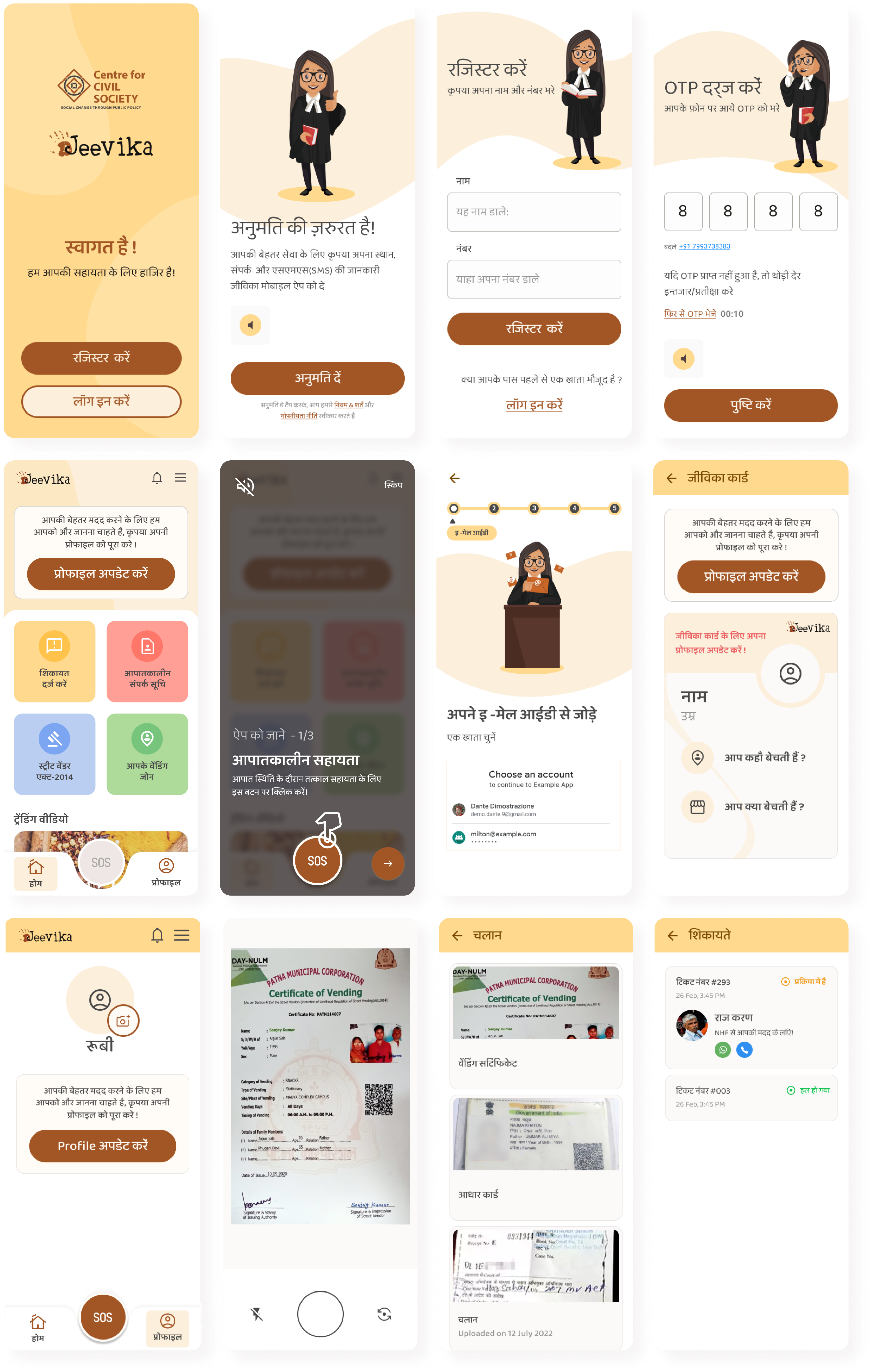Case Studies
Empowering street vendors and protecting their rights.
A mobile application that provides street vendors with information on their legal rights, access to legal assistance, and emergency assistance.
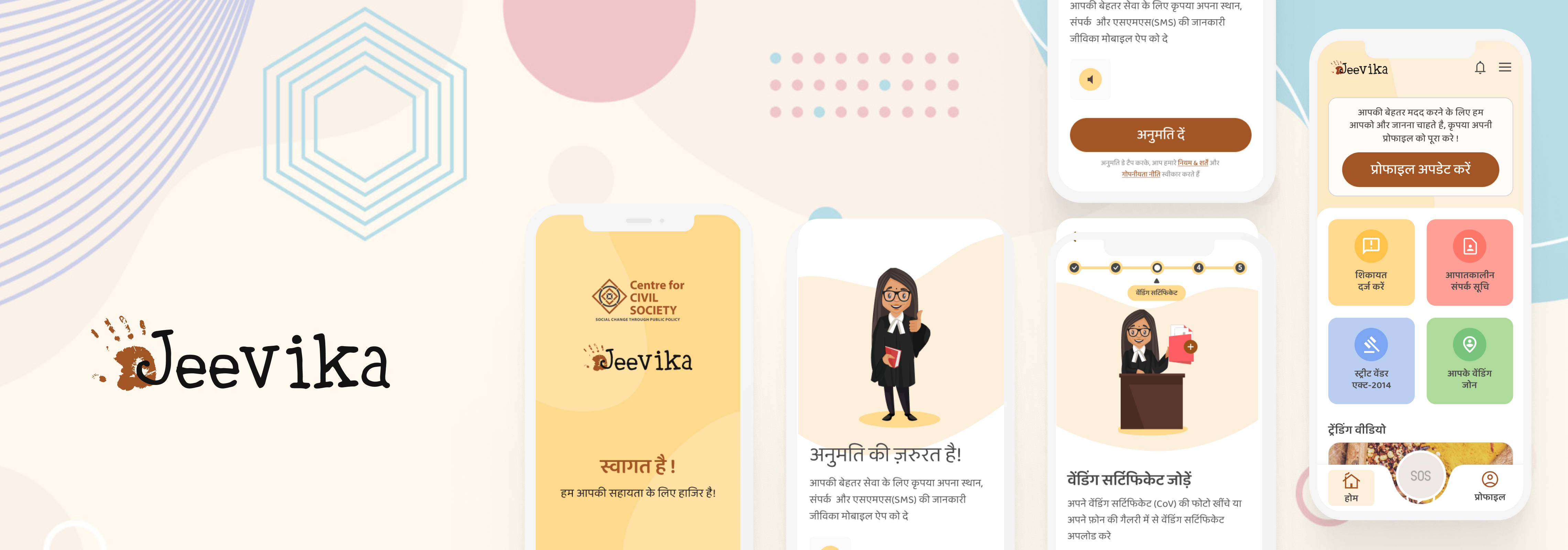
Challenge
Designing a user experience that adapts to local languages, accommodates low literacy levels, encourages app usage, and ensures scalability to effectively support street vendors.
Our app faces significant challenges in adapting to local languages, addressing low literacy rates, encouraging user adoption, and ensuring scalability. To successfully break these barriers, we must prioritise localisation efforts, design with low literacy users in mind, implement effective engagement strategies, and build a scalable infrastructure. By conquering these challenges, we can create an inclusive and widely embraced app, empowering street vendors and maximising its impact across diverse communities.
High level goal
To assist street vendors while also gathering evidence of malpractices through report generation, enabling better advocacy and support for their rights, and addressing systemic issues.
Project Approach
From definition to delivery
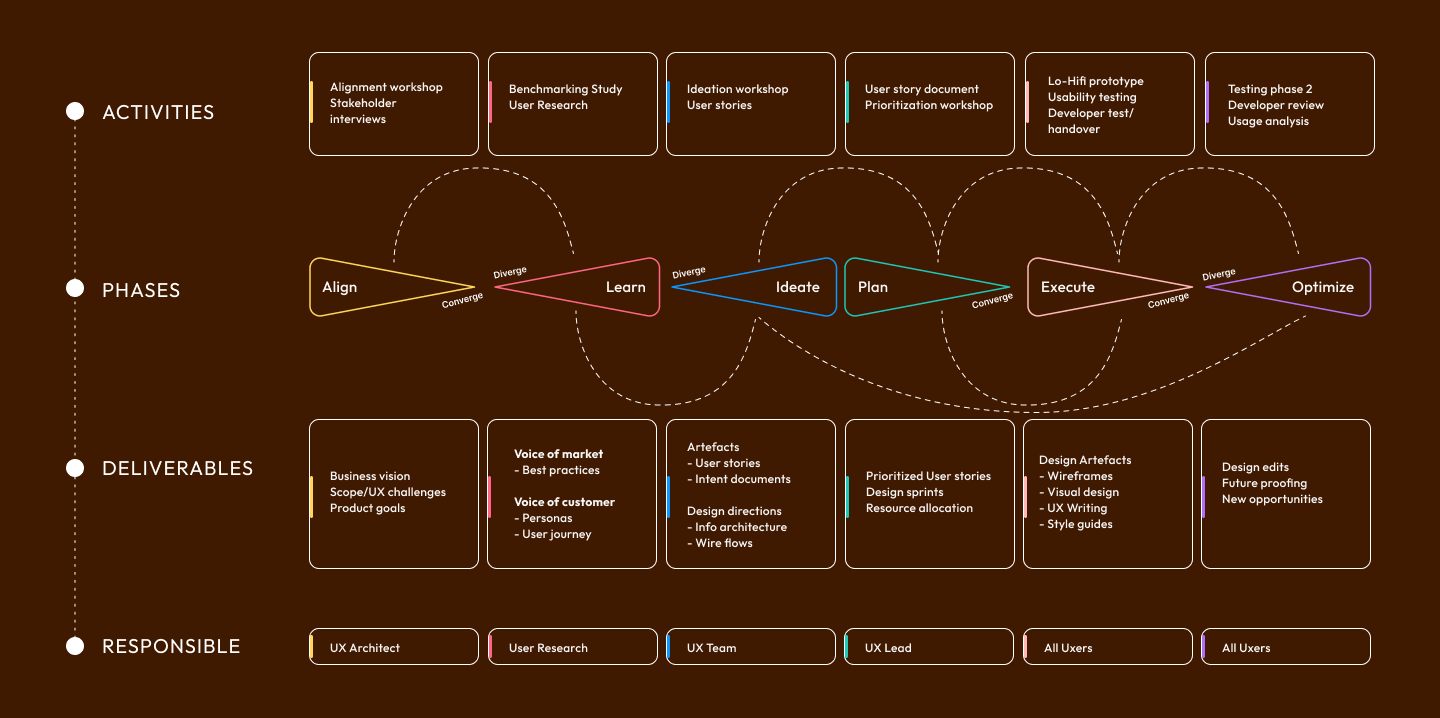

Alignment Workshop
Workshop Expectations
- To achieve consensus among all the stakeholders.
- Understand the long-term and short-term business goals,
- Gather existing knowledge about the CCS process.
- Find current and expected user segments and create personas.
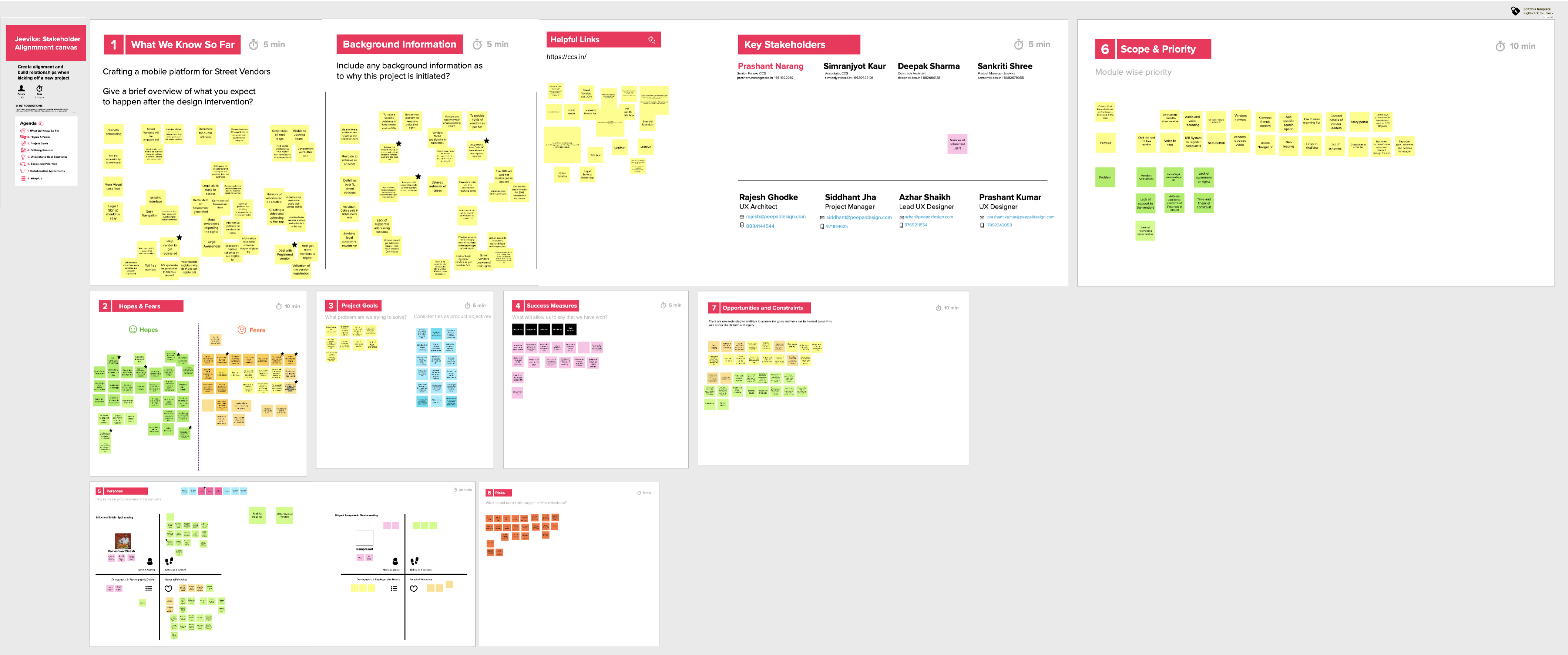
Workshop Insights
Product Goals
- Vendor Harassment Data Bank: Establishing a repository to document incidents of vendor harassment for evidential purposes.
- Quick, Easy and Free Legal Aid: Providing a platform for street vendors to easily access legal support.
- Case Follow-Up: Enabling vendors to track their cases and receive updates.
- Vendor Stories: Creating a space for vendors to share their experiences and raise awareness.
- Chat Feature: Facilitating communication between vendors from different associations.
- Vendor Network: Building a community of street vendors to empower and support each other.
- 2000 Active App Users: A target number of active users for the platform.
- Geo-Tagging: Implementing a feature to identify the location of street vendors.
- Emergency Support Mechanism: Offering an option for street vendors without smartphones to access support through a toll-free number.
Success Measures
- Reduction in cases of harassment by 60%: Achieving a significant decrease in the number of incidents of harassment within two years.
- 2000 Active Users: Reaching the target number of active users for the platform.
- Accountability in public officials: Increasing accountability for public officials in addressing vendor harassment cases.
- Vendor-Initiated Cases: Increasing the number of cases initiated by street vendors.
- Impact on Vendor’s Life: Improving the quality of life for street vendors due to reduced harassment.
- High Number of Success Stories: Encouraging a high number of vendor success stories shared on the platform to raise awareness and empower others.
- 80% of Vendors Geo-Tagged: Accurately identifying a significant portion of street vendors by location.
- Successful Claim of Vending Spot: Increasing the number of street vendors who successfully claim their vending spots.
- SVs without smartphones/illiterate can raise concerns: Enabling street vendors without smartphones or who are illiterate to access support through the platform.
- Effective Implementation of 2014 Act: Ensuring the effective implementation and enforcement of the 2014 Street Vendors (Protection of Livelihood and Regulation of Street Vending) Act.
Scope
- Mobile Application: Developing a mobile app called “Jeevika” as a digital solution.
- Legal Rights Awareness: Helping street vendors understand their legal rights.
- Legal Assistance: Providing legal support through collaboration with law students and lawyers.
- Emergency Assistance: Offering emergency support through SOS services.
- Geo-Tagging: Implementing a feature to accurately identify the location of street vendors.
- Verification of Property Rights: Streamlining the verification process for property rights.
- Monitoring and Acting on Harassment: Enhancing the ability to monitor and respond to incidents of harassment.
- Connecting Vendor Organisations: Creating a common platform to connect various street vendor organizations.

Benchmarking
Task Agenda
We studied some direct and indirect competitors of CCS and similar apps to gather their best attributes. Consequently, we were able to compare Jeevika with these brands and gain a better understanding of user interactions with this type of app.
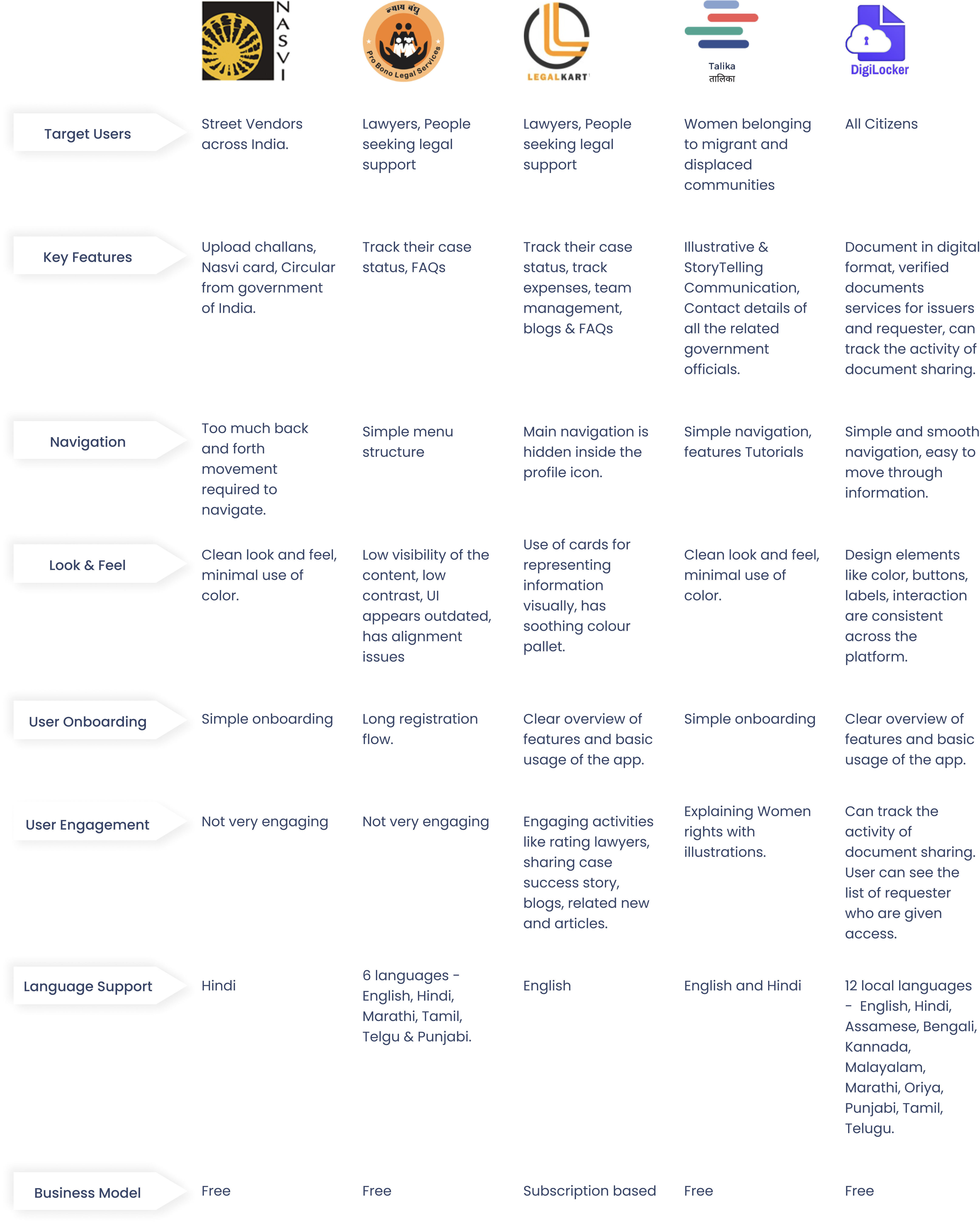
User Segments
Creation of Proto-Persona
The personas encompassed the goals, pain points, fears, and aspirations of the two primary user types. This enabled us to empathize with the users and generate effective ideas.
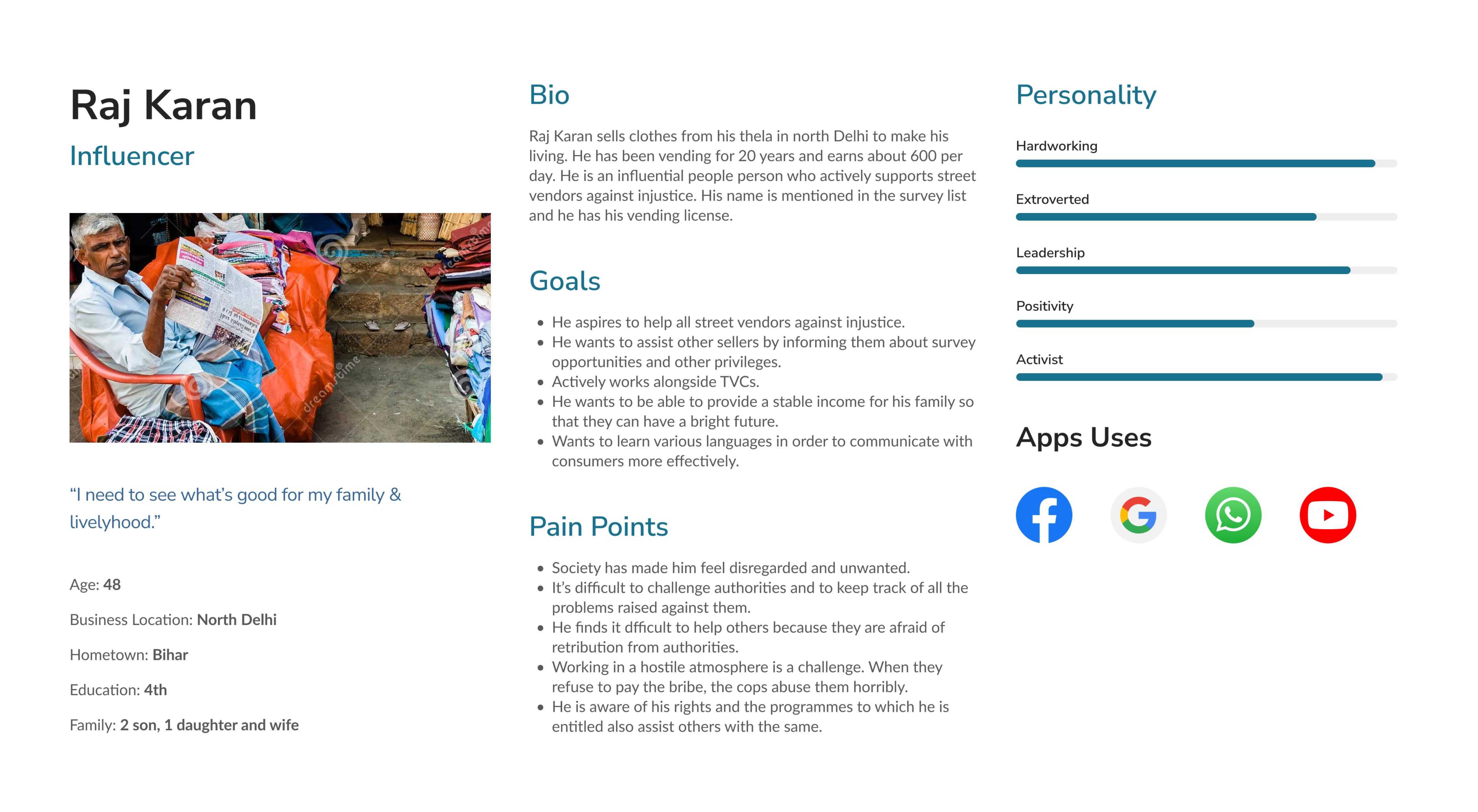
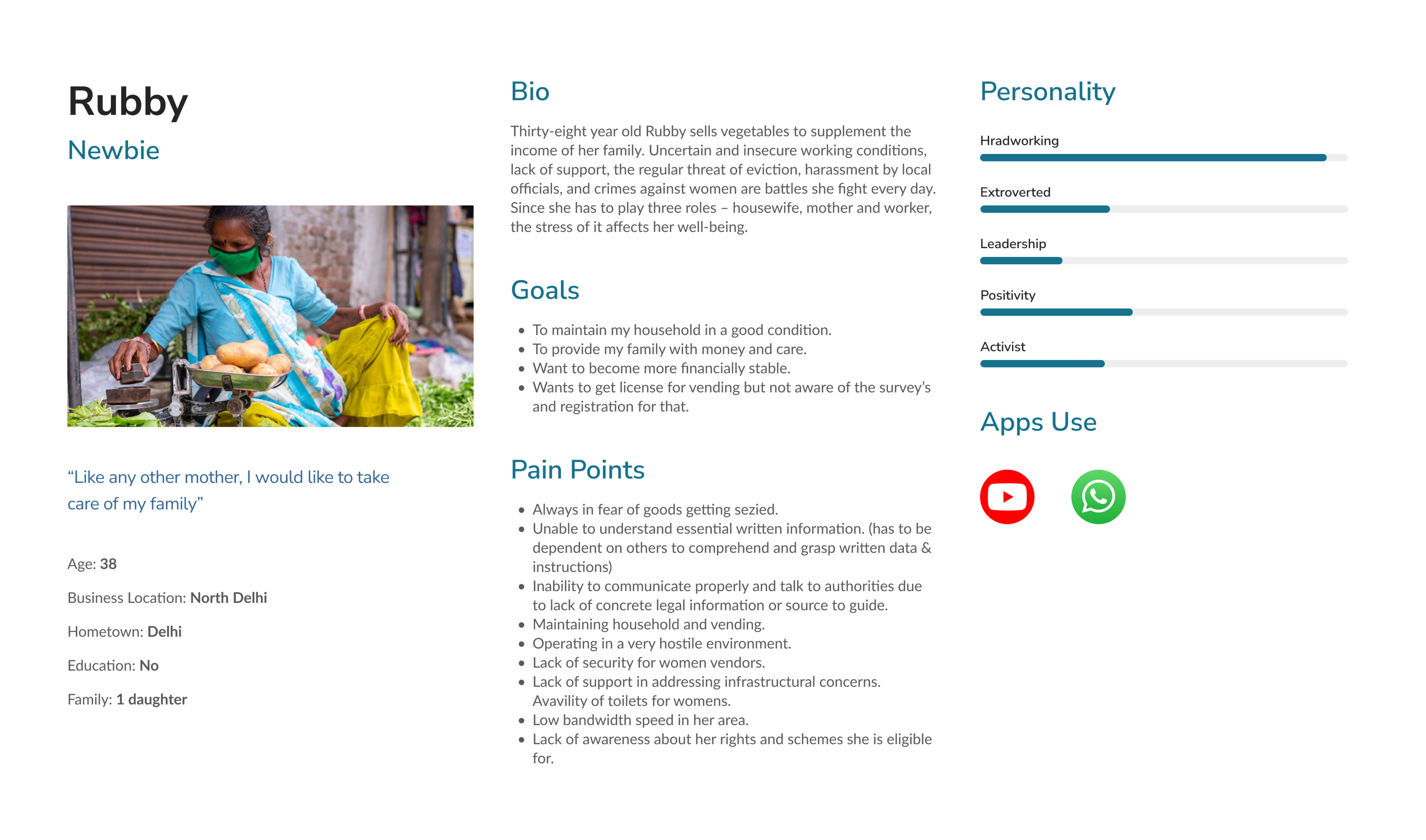

User Stories
Personas capture user attributes, while user stories bridge the gap by defining user intent without neglecting user attributes. This approach leads to refined feature requirements in user stories.
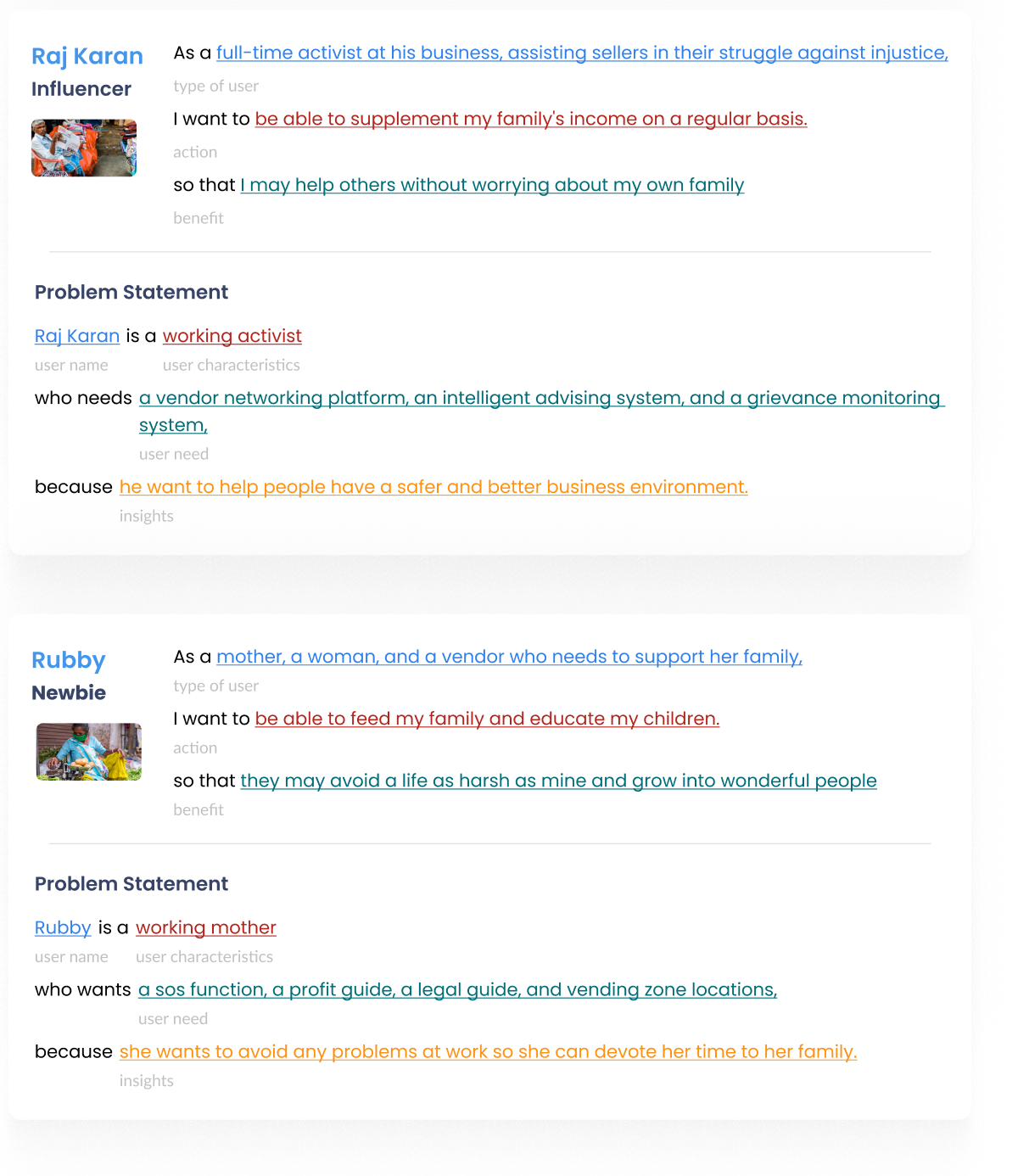
How Might We Questions
Yes, “How Might We” questions are a useful tool in the design thinking process. By asking these questions, you can identify the specific challenges faced by each persona and generate ideas to address those challenges. This helps you to focus on solving real problems and creating solutions that are tailored to the needs of the users. By involving users and stakeholders in the process, you can ensure that the final solution is relevant and effective.
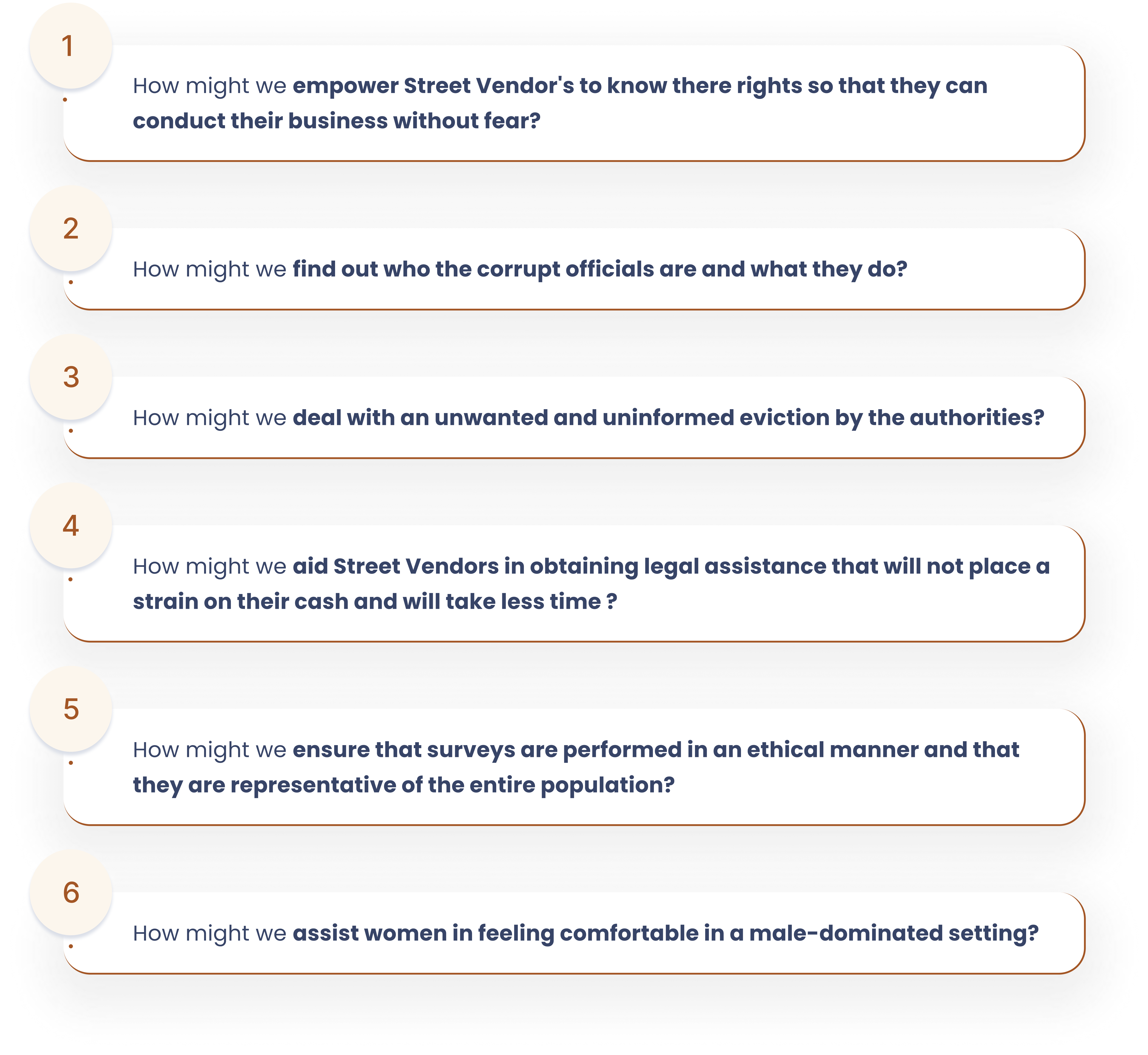
Information Architecture
It is designed to organize and categorize information in order to improve usability, findability, and enhance the overall user experience within the system.
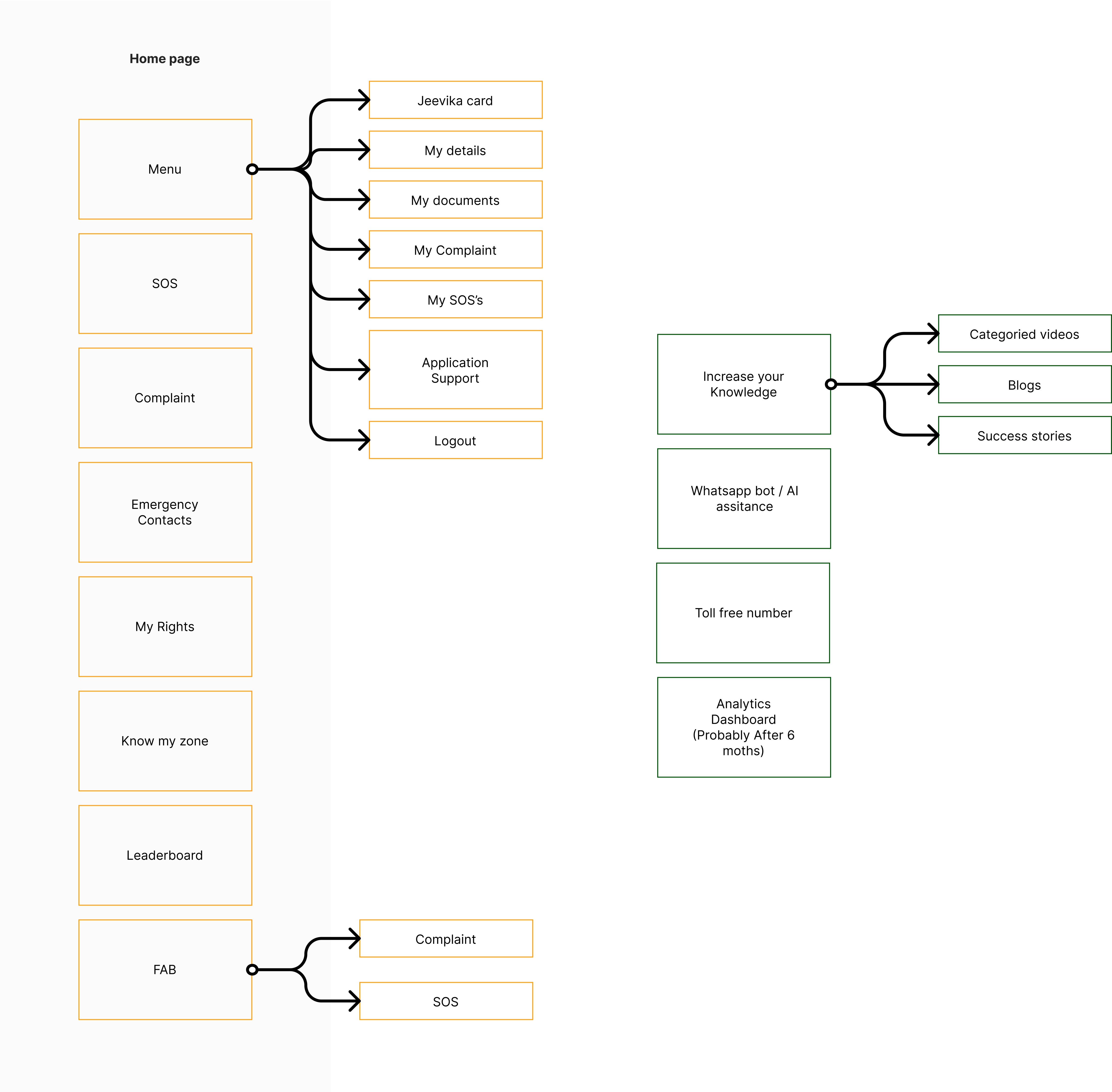

Value Effort Mapping
Finalizing features on the basis of value addition and effort
We listed all the features derived from the “How might we” questions and mapped them against the time required for development and planning, considering the value they create at a market level.
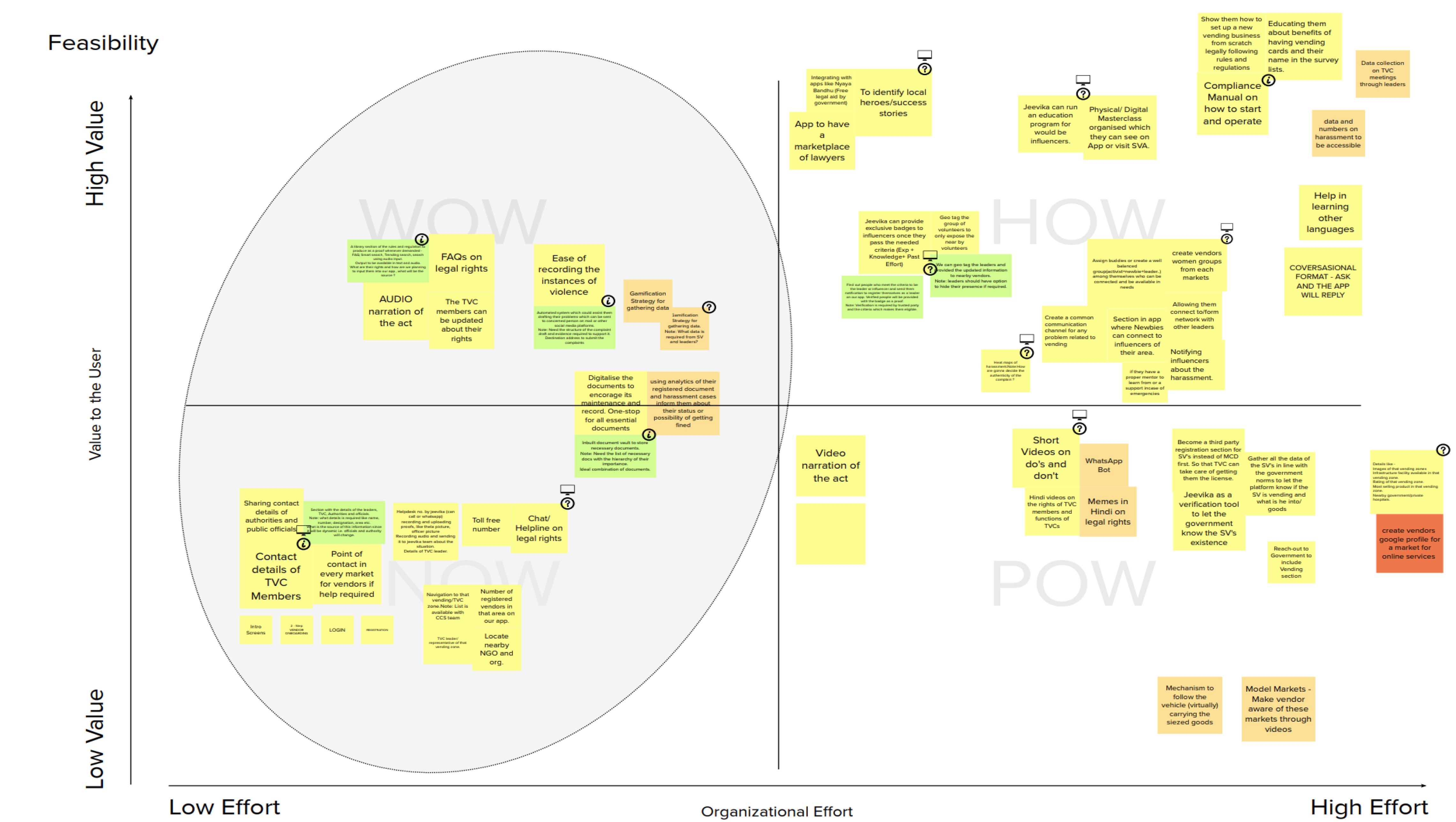

Wireframes
Wireframes were created to provide stakeholders with a foundational structure of the design and gather feedback before progressing to the visual design phase.
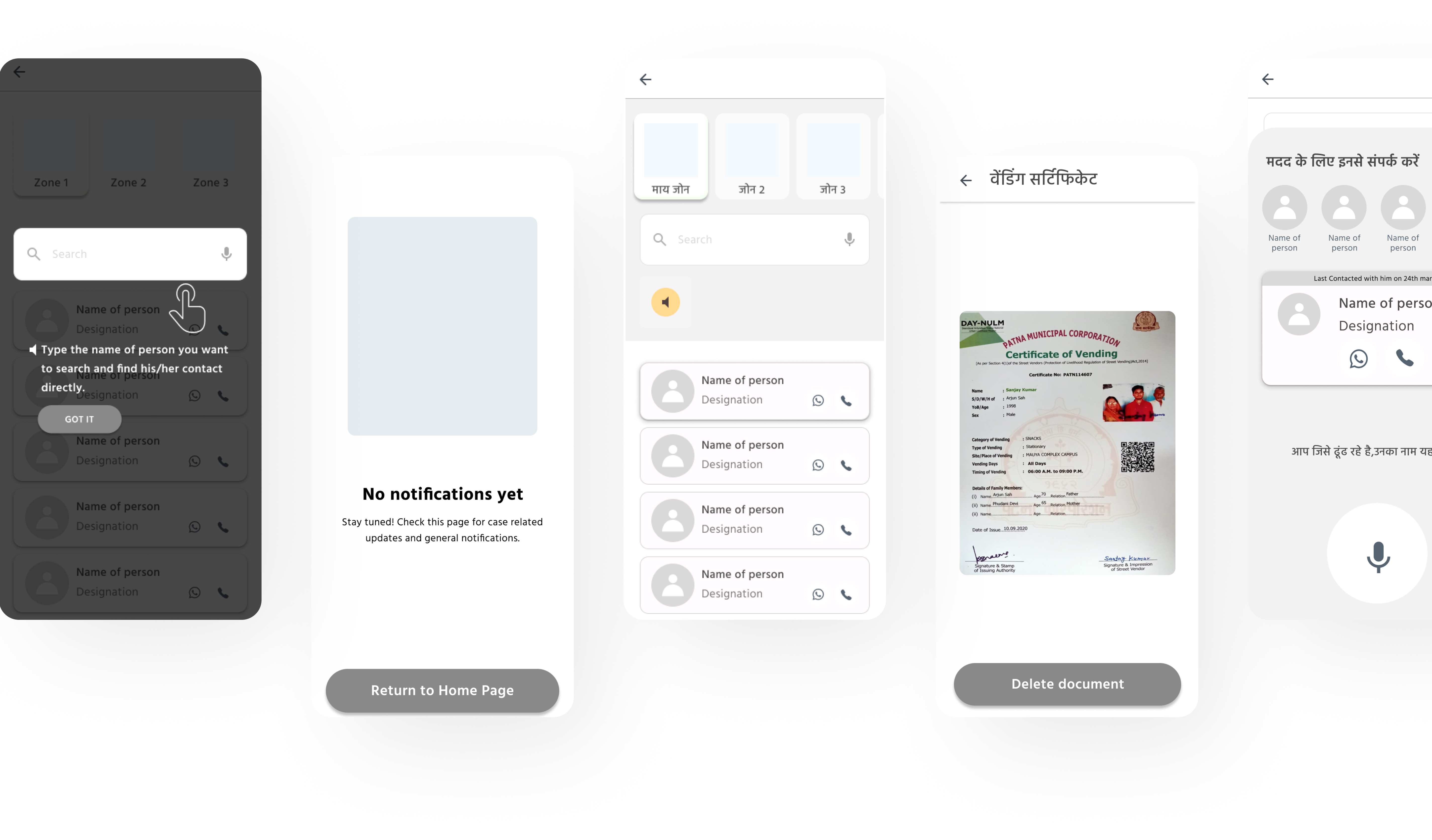
Style Guide
The next plan of action was to create colour palettes and typography that would help communicate the brand’s identity and also give the product an exciting feel.
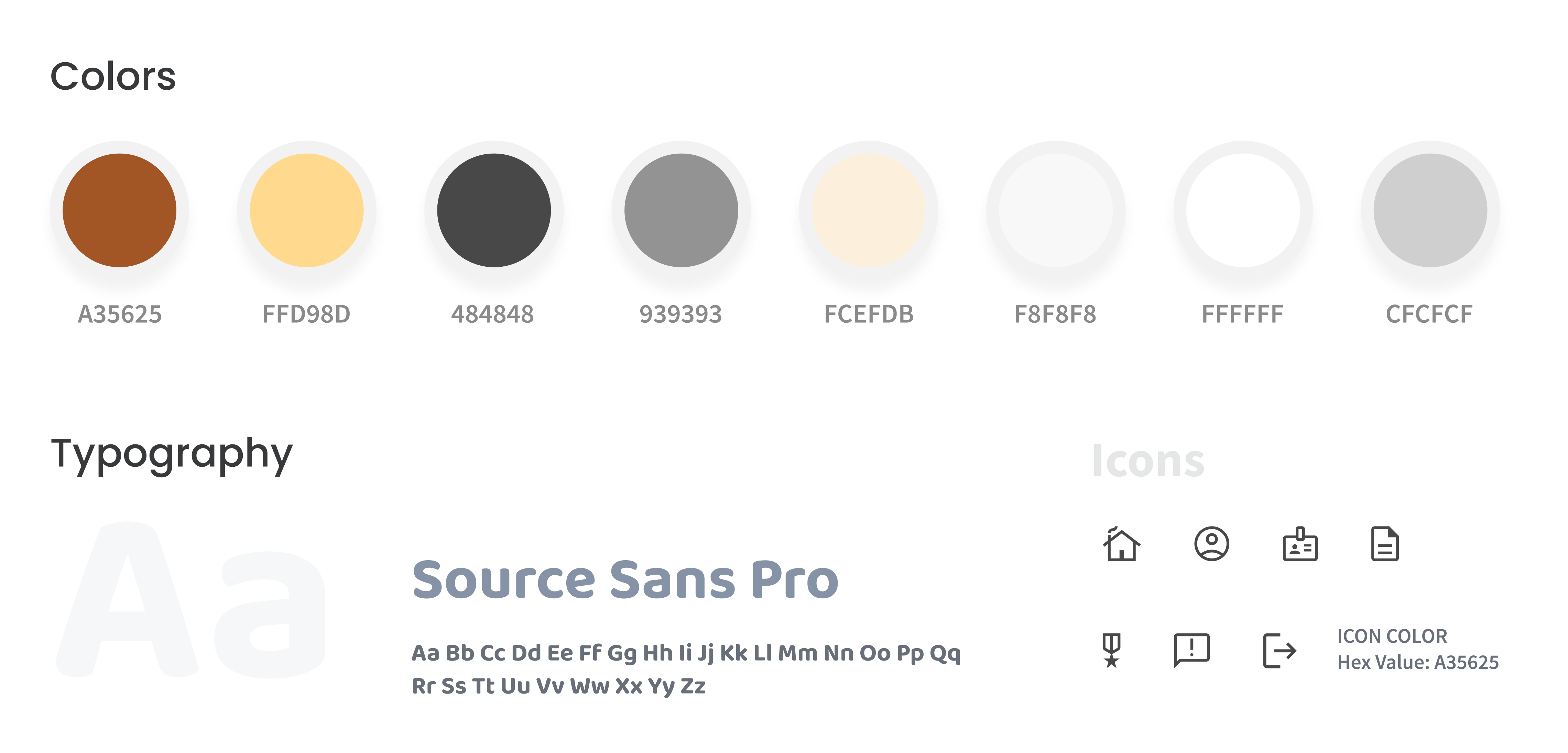
Visual Design
A high-fidelity prototype was developed for each flow, incorporating the brand color palette and considering usability factors. This prototype provides a convenient way for users to learn and engage with the product.
